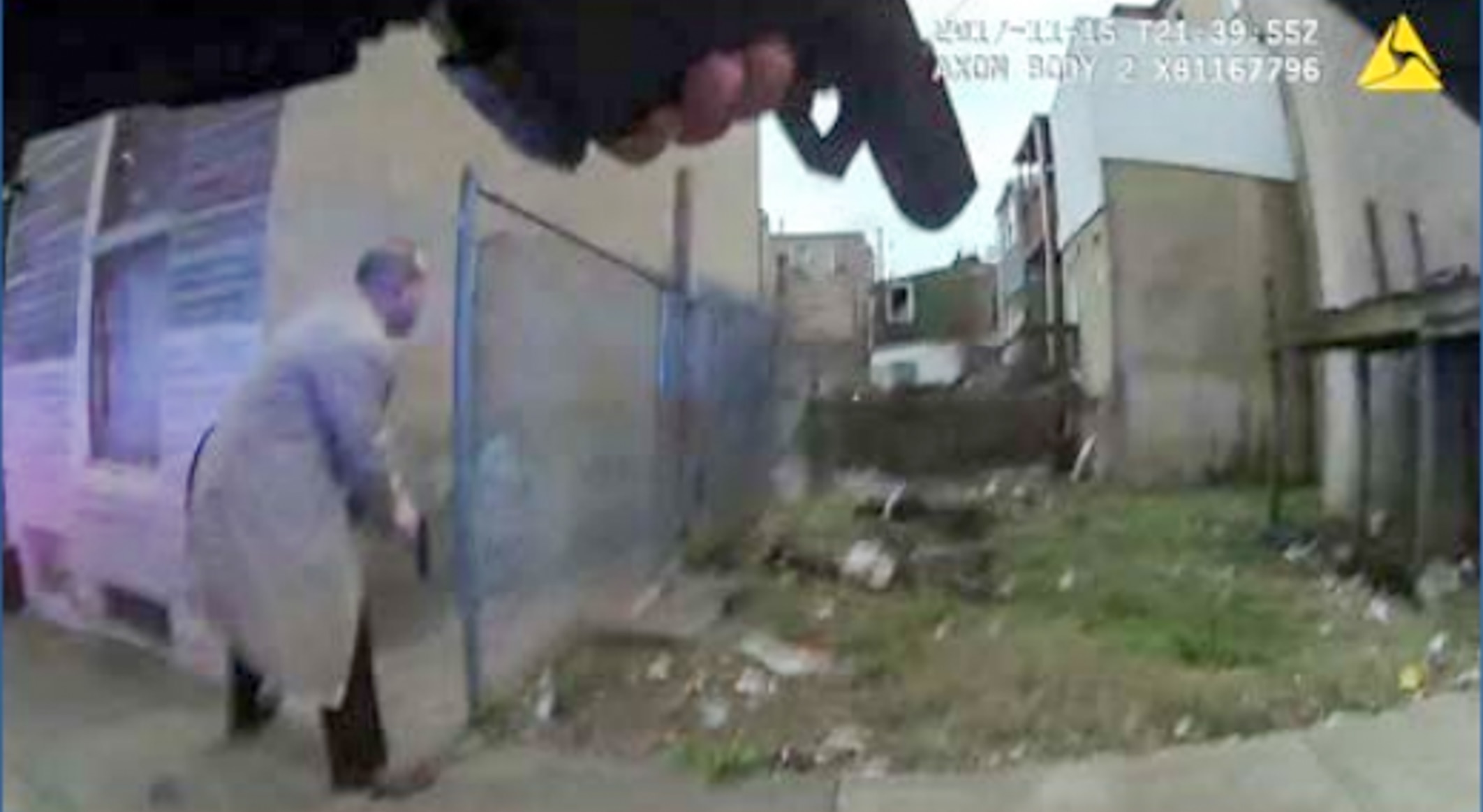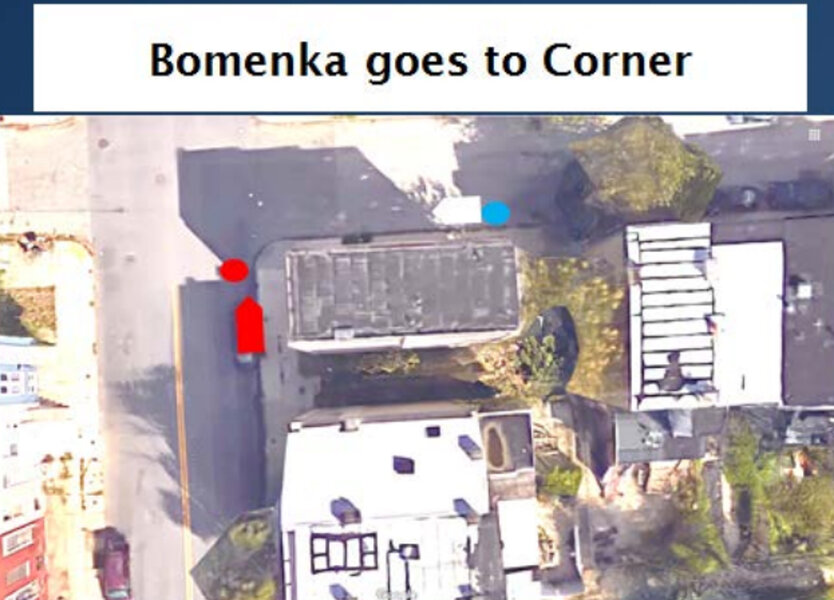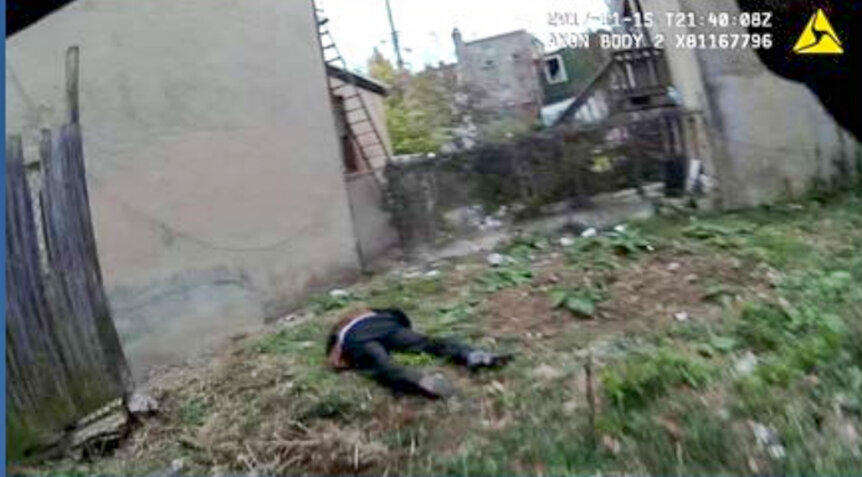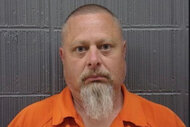Create a free profile to get unlimited access to exclusive videos, breaking news, sweepstakes, and more!
Baltimore Police Think They've Finally Solved The Killing Of One Of Their Own
Sean Suiter, a Baltimore homicide detective, was found shot in the head in an alley while investigating a triple killing in 2017. Now police say they finally know what happened.

The mysterious death of a Baltimore police officer was not a homicide but a suicide -- that’s the conclusion of a report issued Tuesday by an independent panel that investigated the case.
Sean Suiter, a homicide detective, said he was conducting a follow-up investigation into an unsolved triple killing when colleagues found him with a fatal bullet wound to his head near the original crime scene on Nov. 15, 2017.
The Maryland Chief Medical Examiner's Office in Baltimore determined that Suiter's death was a homicide. But no suspects were ever identified, despite an almost $250,000 reward and the inexhaustable efforts of Suiter's fellow homicide detectives in the Baltimore Police Department.
Now, notwithstaning the medical examiner's finding that Suiter's death was a homicide, the 207-page report finds that “Detective Suiter intentionally took his own life with his service weapon.”
He did it because he was the subject of a federal criminal investigation into corruption in the BPD'S Gun Trace Task Force, the report says. A GTTF member had already implicated him in criminal wrongdoing, and Suiter was in fact subpoenaed to testify before a federal grand jury the day after he was found dead.
The report also found that how the BPD manages and processes evidence at crime scenes is inadequate, and recommended reforms -- while blasting the department for failing to follow earlier recommendations for improvements.
The chair and vice-chair of the seven-member panel, James Stewart and James Coldren, respectively, and the Interim BPD Chief Gary Tuttle, held a joint news conference on Wednesday. Tuttle said the department would incorporate the report’s “needed recommendations into our reform efforts.”
Kevin Davis, BPD's chief at the time of Sutter’s death, was singled out in the report for repeatedly sharing “unverified and ultimately inaccurate information with the public,” which gave rise to “a variety of unfounded rumors and theories.”
Chief among these was that Baltimore police were looking for a way to save face by calling the death a suicide, conveniently explaining away their failure to solve the murder of one of their own homicide detectives, according to the Baltimore Sun.
Davis attacked the report on Monday, when word of its shocking finding leaked to the newspaper. Repeating his belief that Suiter’s death was a homicide, Davis told the Sun “Culturally, the BPD can’t live with the fact that there’s an unsolved murder of a cop on the books.”
The group that prepared the report called itself the "Independent Review Board." Its seven members were independent law enforcement experts retained and paid by CNA, a nonprofit research and analysis organization. CNA, in turn, was compensated "under a contractural agreement between the Police Department of Baltimore City and CNA Corporation," according to the report.
The mystery surrounding Suiter’s death started a year before, with the murders of Antonio Davis, Thomas Carter, and Howard Banks—who were found dead at 947 Bennett Place in West Baltimore. All three men were killed by gunshots, and were pronounced dead at the scene.
Suiter was the primary investigator assigned to the case. He joined the BPD in 1999, after an honorable discharge from the active duty U.S. Army into the Army Reserves. He was called back from reserve to active duty in 2005, and deployed to Iraq from May that year until January 2007.
In early 2016, he was promoted to the homicide bureau. Before that, he worked in the BPD's Western District -- a place mythologized as a lawless domain of criminals and crooked cops in the critically acclaimed television series, "The Wire."
Suiter’s efforts to solve the triple homicide in the days and weeks that followed were not successful. Then, on Nov. 14, 2017, and again on Nov. 15, he decided to revisit the scene of the murders. On those days, he did not work with his regular partner, but instead asked to work with Det. David Bomenka.
Meanwhile, a federal investigation into the BPD’s Gun Trace Task Force resulted in the March 2017 indictment of seven task force officers on federal racketeering and other charges, alleging that they stopped innocent people and stole from them.
"These are really robberies by people wearing police uniforms,” said Rod Rosenstein, who at that time was the U.S. Attorney for Maryland (but who has since received a promotion to Deputy Attorney General of the United States), according to the Baltimore Sun.
Among the officers charged was Det. Momodu Gondo, a/k/a “GMoney” and “Mike,” age 34.
That October, Gondo pleaded guilty to racketeering conspiracy and conspiracy to distribute more than a 100 grams of heroin, admitting, among other things, that he robbed civilians, sometimes after arresting them, sometimes stealing both money and drugs from them, and to selling the drugs he stole, according to federal prosecutors' news release.
Facing a mandatory minimum of five years in prison and a potential maximum sentence of 40 years, Gondo agreed to cooperate with federal investigators.
He told them that Suiter participated in robberies with him in 2008, when both were officers in the Western District, the report reveals. He also said Suiter planted heroin in a suspect’s car to justify a high speed chase of the suspect that resulted in the death of an elderly man -- whose son was a BPD officer.
However, another officer who participated in that scheme told investigators Suiter may have found the drugs, but was clueless they had been planted, the report says.
After Gondo implicated Suiter, FBI agents attempted to interview him in late October 2017. Suiter declined, and was served with a grand jury subpoena. FBI agents said Suiter had one question for them: “Will I lose my job?” After that, Suiter retained an attorney, Jeremy Eldridge, to represent him.
Eldridge reached out to the U.S. Attorney’s office, which told him that Suiter was not the “target” of the investigation into GTTF crimes -- he was a “subject.” In return for truthful testimony about crimes he and other police officers committed, federal prosecutors promised him immunity.
Eldridge agreed that Suiter would appear for a “proffer” session with FBI agents and federal prosecutors at 11 a.m. on Nov. 16. He was subpoenaed to testify before the grand jury later that day. He would be expected to answer excruciating questions, in fine detail, at both.
Suiter faced a Hobson’s Choice: fight the case and risk going to jail for so long his young children would be grown men by the time he was released, or snitch on his fellow officers and receive immunity. But, if he chose the later, and admitted personal illegal conduct while serving as a BPD officer, it “would likely end his career,” the report says.
“His admissions would be a firing offense, and the specter of state criminal prosecution might also exist.”
There would also be the risk of retribution by fellow officers, as was famously alleged to have happened to NYPD officer Frank Serpico, who revealed widespread corruption in the NYPD, and was later shot in the head during a drug raid gone bad - an incident he and others believed to be a setup.
Considering what Suiter was facing, one begins to see how a person could consider the previously unthinkable.
Suiter went with Bomenka on Nov. 15 back to the scene of the triple murder, in what he told Bomenka was an attempt to locate a potential witness. As they were driving near the scene, Suiter said he saw a suspicious person.
But Bomenka didn’t see anybody, so they continued on. Then Suiter said he saw the person again. That’s when they parked their car, walked around on foot a short distance, and set-up a hasty surveillance near where Suiter said he saw the suspicious person -- on each side of an L-shaped alley.
Suiter stayed between vehicles parked on the street in front of the opening to the short-end of the alley, while he directed Bomenka to wait around a corner approximately 60 feet away, covering the other opening to its long end. They maintained loose eye contact as they waited.
Four minutes later, Suiter waved to Bomenka and ran into the alley.
As Bomenka lost sight of Suiter, he saw Suiter drawing his gun, then he heard Suiter yell “Stop! Stop! Stop! Police!” Bomenka said he heard five or six gunshots. When he reached the vacant lot, nine seconds later, according to the report, Bomenka saw Suiter, mortally wounded, laying facedown on top of his gun, police radio in his left hand, right hand empty.
Bomenka did not see anyone in the alley other than Suiter, so he ran back around the block to see if someone had come out the other end of the alley. But again Bomenka did not see anyone.
A witness sitting in his home said he heard the gunshots, looked out his window, saw Suiter first, already on the ground, then Bomenka appeared. He saw no one else.
Bomenka returned to Suiter and began CPR, before carrying Suiter with other officers to a police car that would speed him to a hospital. Bomenka stayed behind. The car carrying Suiter crashed on the way. An ambulance carried Suiter the final distance to the hospital, where he was pronounced dead.
The only weapon recovered at the scene was Suiter's department-issued .40 caliber Glock. Three spent cartridge casings where recovered, each department-approved ammunition for the Glock. Suiter’s radio was in his left hand, and the entry wound into his head was on its right side. Suiter was a righty.
Significantly, Suiter’s DNA was found inside the barrel of his gun, making it “highly likely," the reports says, that the gun was the one that fired the fatal shot, because blood from his head back-spattered into the barrel when he last pulled the trigger.
There was also back-spatter on the shirt sleeve of Suiter’s right arm, which was sheathed by jacket sleeve; it could only have gotten there had he been holding it up to his head.
No other DNA was found on Suiter, and he had no defensive wounds of the type a person would sustain fighting with an attacker -- just two small bruise and nothing on his hands.
Together, the evidence shows its highly unlikely someone took the gun from Suiter -- an Army veteran who served in Iraq, trained in hand-to-hand combat by both the military and police -- and turned it on him, then placed it under his body and literally disappeared, in the nine seconds it took Bomenka to reach him, the report finds.
Bomenka’s firearm was also examined; it was not fired on Nov. 15.
A $215,000 reward was offered for information about the perpetrator(s) of the crime, and the BPD executed nine search warrants in the vicinity of Suiter’s killing. They also followed 52 leads. But they never obtained evidence pointing to a suspect. The report calls this "telling."
Finally, the report says Suiter “had every incentive to make his death not appear to be a suicide,” because the benefits a family of a police officer killed in the line of duty receives are “far more lucrative than the entitlements for a police officer who has taken his life.”
"Based upon the totality of the evidence," the report concludes, Suiter killed himself with his own gun and staged it to look like he was killed.
The medical examiner who performed the autopsy on Suiter concluded his death was a homicide, but that was based on an BPD officer telling her --- in response to her question --- there was no evidence that Suiter committed suicide, investigators working for the board found.
In the wake of the board's report, the Maryland Chief Medical Examiner's Office in Baltimore said it would revisit its conclusion, the Baltimore Sun reported.
At Wednesday’s news joint news conference Interim BPD Chief Tuttle said the case would officially remain open, unless and until the medical examiner’s office changed its conclusion that Suiter’s death was a homicide.
Still, he said “my hope is that Det. Suiter’s family will see some clarity as a result of this report.”
But Suiter’s widow, Nicole, told the Sun through her attorney, Paul C. Siegrist, she "disagrees" with the report, and was “shocked by their conclusion.”
[Photos: Independent Review Board]
























